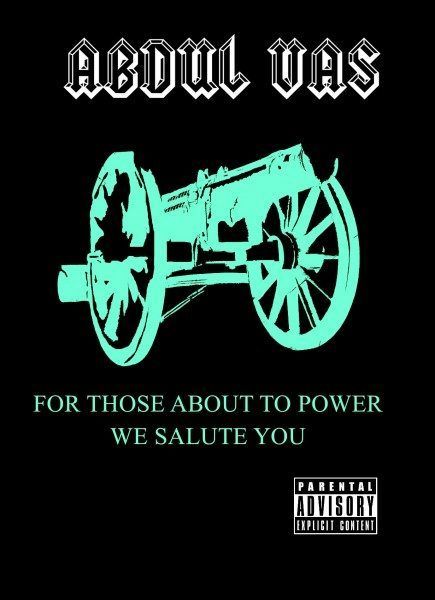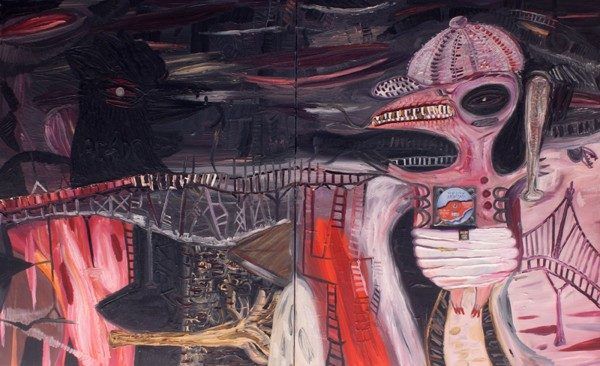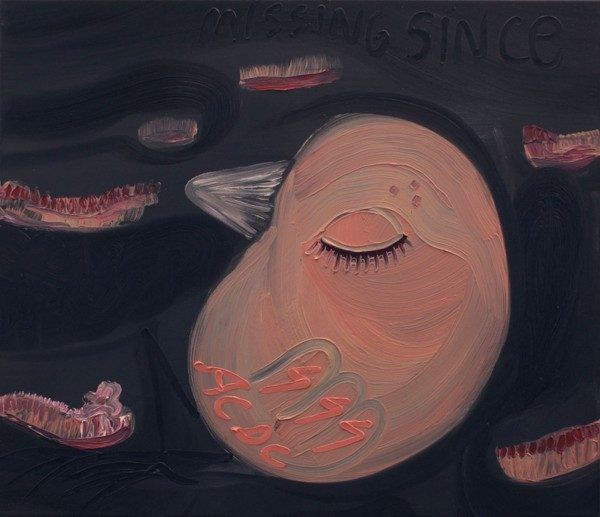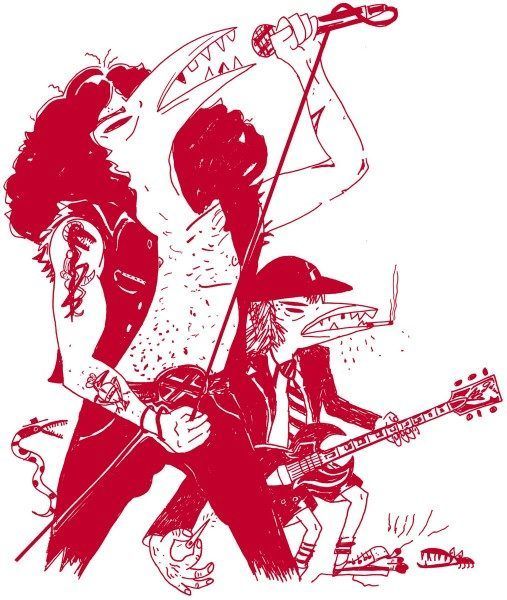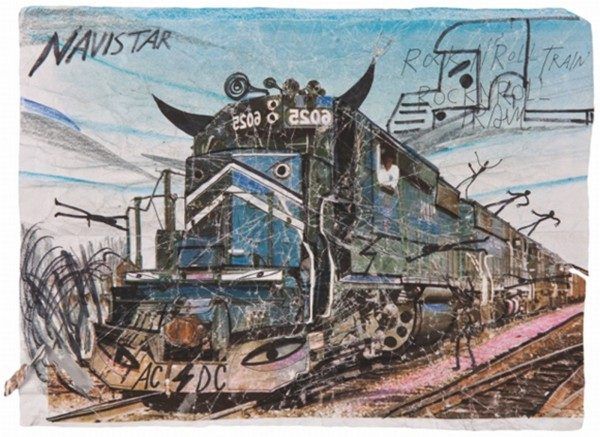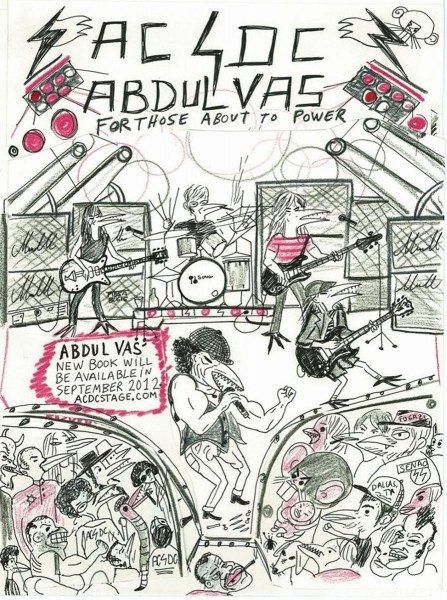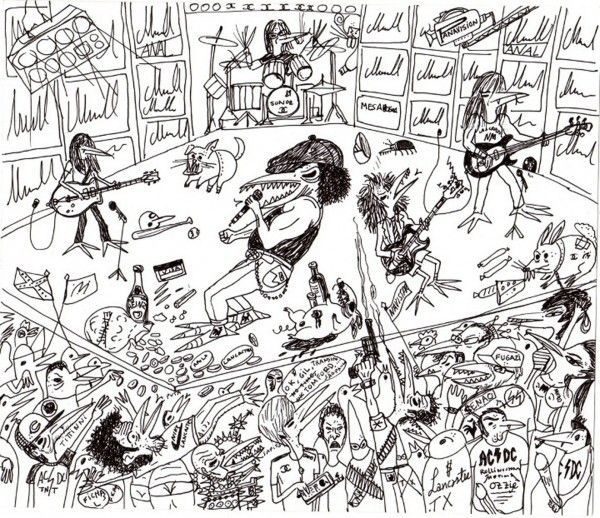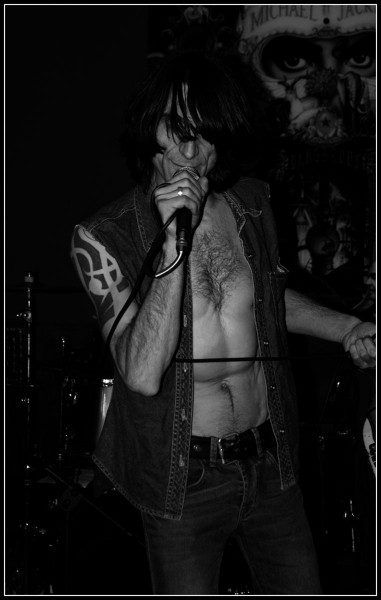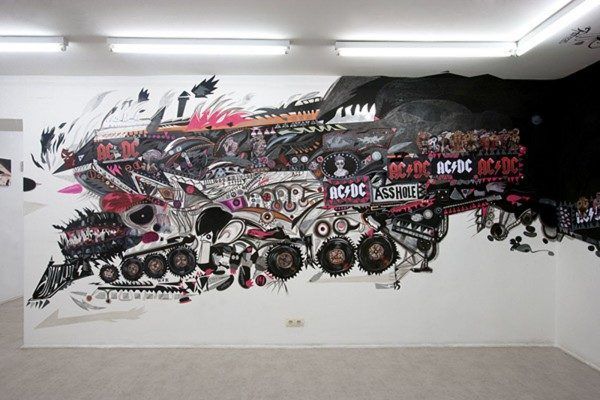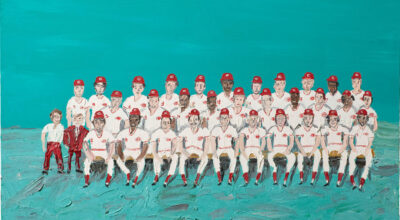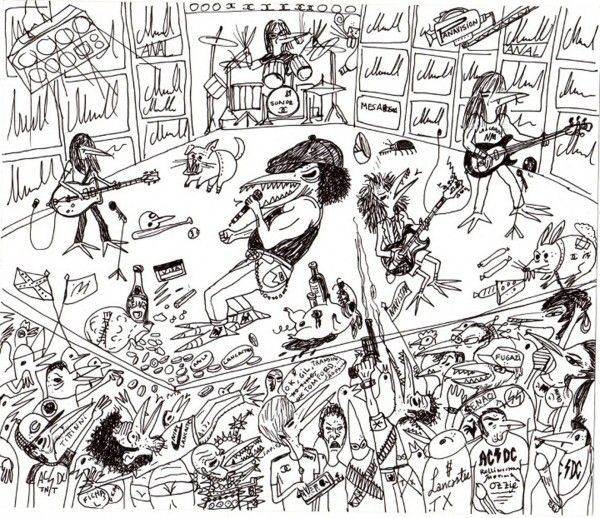
Abdul Vas:esto no me Puede Estar Pasando, Estoy Viendo a los Dioses
Fue alucinante ver a la banda de rock más grande de todos los tiempos en directo aquella noche del 8 de diciembre de 1990 en el Mabee Center de Tulsa, Oklahoma. La audiencia de cientos de miles de fans estaba excitadísima y coreaban el nombre de «Angus, Angus, Angus». Cuando se apagaron las luces la cosa se puso seria y en unos instantes aparece AC/DC como un trueno aplastante y lleno de poder como es habitual en ellos. Angus y compañía destrozaron el recinto con su poderoso rock n’ roll, dejando claro quiénes son los que mandan sobre un escenario. AC/DC es el verdadero rock n’ roll y el rock no sería lo mismo sin ellos. Puedo afirmar que AC/DC ha creado el rock y que sus conciertos en directo son lo más cercano a la inmortalidad.
For those About to Power es la primera publicación monográfica sobre la obra de Abdul Vas inspirada en el poder de AC/DC . Durante más de una década, y con la experiencia de haber estado en 32 conciertos de AC/DC, Abdul Vas reúne material que incluye dibujos, pinturas, instalaciones y fotos intervenidas (collages) sobre la potencia de AC/DC.
En el proceso de edición, Octavio Zaya fue el encargado de dirigir el proyecto hacia el camino más eficaz y preciso sin alterar ni cambiar la admiración que siente Abdul Vas por AC/DC. Zaya simplemente supo unir de forma directa las obsesiones que Vas tiene por los camiones y por AC/DC. El resultado final es este monográfico titulado For those About to Power, que invita a los que tienen huevos de verdad a subir al camión del rock n’ roll de AC/DC directo al infierno.
A la venta desde septiembre de 2012, es un ejemplar que vale la pena tener en la bioblioteca de casa y que en sus 220 páginas nos lleva al universo de la banda de rock más grande de todos los universos, a grito de Thunderstruck.
La edición de coleccionistas incluye cuatro stickers inspirados en la gira mundial The Razors Edge. El libro está publicado y distribuido TF Editores, Madrid.
ABDUL VAS POWER ENGINES FOR AC/DC
Abdul Vas in conversation with Octavio Zaya
OCTAVIO ZAYA: When did you first draw a Navistar truck? What made you do it? Was it the first time you got interested in trucks or had you already drawn or painted others?
ABDUL VAS: I think it was in 2002, when I again saw the movie that I had forgotten, “Maximum Overdrive”, by Stephen King. In it, the trucks wanted to take complete control over Planet Earth. What motivated me was that the International Navistars had been used on some of AC/DC’s tours to transport their stages in America, and that AC/DC had provided the sound track for the movie. Everything fell into place to get me obsessed with these trucks, and to make the first Navistar controlled by AC/DC.
O.Z.: The film was also the first and only one that King had directed. As you know, it was based on one of his first stories, «Trucks», and it was nominated for the «Worst Director» award in 1987, and then in 1988 for «Best Picture» at the International Fantasy Film Awards. Now it’s a cult film with unconditional fans, as I suppose you are. From what you say, do you think that the trucks you drew always had anthropomorphic elements and the ability to operate as independent beings? Or were you obsessed by the possibility of working out situations or scenes of power and desire controlled by AC/DC? In other words, do you regard the trucks as simple projections of AC/DC? Aside from being Stephen King’s favorite group, it hardly needs saying that the band’s presence in your work is well beyond prominent.
A.V.: Yes, the film was harshly treated by the critics. Not even AC/DC’s American “Who Made Who” world tour did justice to it, though the film helped the tour to sell out in record time, and the tour made more fans familiar with the film—thanks to the powerful single Who Made Who. I’m a huge fan of Trucks—for me it was a gateway to absolute power!
My first Navistar trucks were chickens with wheels and steel armor and fed with the band’s initials. Over time they have been perfected as beings controlled by a universal order directed by Harry Vanda and George Young. They were the duo that produced the first AC/DC albums. Of course I’m obsessed, and what I want is for AC/DC to have complete control over all universes by means of the sounds that they generate. These sounds would be kept in Malcolm Young’s mighty Jet Firebird guitar, and used in their tours of the different galaxies. My trucks are an excuse to feel close to my idols, whom I’ve seen 27 times in concert, and with whom I have really felt the essence of life. In my opinion, without them, nothing would have been possible, and that’s all there is to say!
O.Z.: I was going to say that AC/DC would merely be a pretext for your work, the theme driving you to conceive it and develop it. But you’re saying the exact opposite, that the work is an excuse, a simple gesture, within your limitless devotion, which is the reason you do it, why it is as it is, and is what it is. Your Navistar trucks, your references to Malcolm Young’s legendary Jet Firebird, etc., are simply testimonies of the devotion of a believer, and opportunities to feel close to your idols. And yet there is something about that almighty devotion that we have still not mentioned, which is that just as Hocquenghem said of motorcycles, we could say that your truck is a sex organ, and in fact a gigantic and powerful, high-speed penis. But I really don’t think that you or your work is very concerned with what this means in relation to desire, but rather with how it works, this sort of desiring machine that seems connected to the machinery of—relative to AC/DC, but also to social/sexual relations in general—and with contemporary technology. How do you understand sexuality and the sexuality of these machines?
A.V.: My productions are an offering to AC/DC. Perhaps I am not close to them physically, but, in my heart I feel the absolute power that they shed upon me. For me, I can sense infinity by dedicating all these pieces to a band that has given everything to rock and roll. They have stood outside all trends and passing fashions, always true to themselves. They’re the greatest of all times and, thanks to them, in the engines of my trucks, you can hear the riffs of their powerful guitars. My desire is that everything should revolve around them directly, but always under the absolute control of their powerful music. I can’t explain this adoration in words—it’s something you have to feel. With regard to Malcolm Young’s legendary Jet Firebird, all I can say is that it is the indestructible core of this obsession called AC/DC=POWER. My truck does not possess a defined sexual condition, but what is obvious is that it is nourished by AC/DC to operate in some instances as musical and sexual governor, travelling around the galaxies handing out rock and roll and anal sex at all times to all people who are prepared to feel this power in their bodies and their souls in the event that they have souls. “Anal sex is the most aesthetic sensation that can be experienced in this life». This sentence could be the best motto for some of my trucks. In my case, the sexuality that I am living has a very different aim from that of this ungovernable machine. What I understand as sexuality is for me a path I walk each day that operates as an emotional link for my development as a person and for establishing relations, fantasies, disappointments, friendships, beliefs, love, attitudes, and many other things, things that can’t always be revealed. As regards my machines, they have different types of sexuality and ways of operating. One of them is to generate orgasms automatically as long as you’re listening to music by people of the standing of Muddy Waters, ZZHill, LaVern Baker, and Little Milton, to mention some of the greatest, all of them protected by AC/DC. For me, it’s a question of hearing music that awakens your sexuality, letting yourself go, and if one day you climb onto one of my trucks, all your desires will be within your grasp! [laughs]
O.Z.: It sounds like a manifesto of devotion, quasi-religious and enraptured, which contrasts somewhat with the expressionistic aggressiveness that is inherent in most of your work, especially the aspect that represents waste, flows, codes, insertions, and fragments of objects that make up or are synthesized in your trucks. This devotion would explain the fetishism that is omnipresent in the work. Or perhaps not. To what extent do drawing and painting lead to them, and not the reverse? In other words, is this the best way you can find to express that limitless devotion, or is it the devotion that itself dictates how it should be expressed?
A.V.: The devotion I feel for them is the purest and most absolute that I have ever felt towards anything. If it were possible, my ideal would be to stay on tour with them forever. But I also need to come back to myself, far from AC/DC. To continue to render homage to them, of course, but also to pay tribute to my own voice, to connect with myself, so the painting can flow freely from myself without intermediaries. But I can assure you that painting has never given me the ecstasy that I have experience in one of their concerts, seeing how much energy can be given off in a little more than two hours of the most intense power. My need to paint has been increasingly altered by the AC/DC phenomenon. Today, they are the intermediary between myself and my own voice. The distance between what I feel in each instant and my need to paint has become too great. With regard to the devotion, the work I produce is a direct channelling of my interests, dreams, and obsessions. It’s like a form of therapy in which I experience a great personal satisfaction that fills my most primary needs. The contact of the work with the public and the aesthetic experience it generates never fails to surprise me, in a very positive sense. It connects with people of different generations and origins, and its reading is accessible and universal.
O.Z.: Let’s now talk more about you and, if you’re able, only about you, since we already know about the rest. In other words, omitting what’s already been mentioned, what are the artistic references of the work? Where does it come from? Where is it nourished? Have you felt any other major influence?
A.V.: When I roll up my sleeves to paint or draw, I have already gone through a period of reflection and investigation of the subject that interests me. This is a very basic and rapid process and it has to do with occasional glimpses at books, pictures, and documentary films. Facing the canvas or the paper, I work very forcefully and spend hours on the technical sketch, which might be described as expressive vomiting. I end up exhausted after painting for 12 hours straight, almost without light—I usually work best at night. My references begin with the library in my mother’s house. I was a voracious reader as a child, and I soaked up literature until the age of 16, when I began to give shape to my artistic concerns. I remember the classics by Robert Louis Stevenson, Honoré de Balzac, Charles Dickens, and Oscar Wilde, and the more contemporary books by John Dos Passos, Williams Faulkner, Jorge Luis Borges, etc. There was also poetry by Fernando Pessoa and Lord Byron, and esoteric and spiritual philosophy by Pyotr Ouspensky and George Gurdjieff. But one of the books I remember best was Anton Chekhov’s A Journey to Sakhalin, with a painting by Marc Chagall on the cover. It was a big chicken, which I found pretty and romantic. I loved that book. One of the things that impressed me the most about Chagall was his early life and the conditions he lived in. His work alluded to his childhood, the Nazi holocaust, the Stalin regime. He addressed many themes which over time I have found useful to incorporate in my work. Another artist who is important for me is Öyvind Fahlström. I have a very special affection for him, and he is one of the artists that made me decide to devote myself to art. My horizons were widened by his writings, his sculptures, his collages, which all had a very romantic impact on me. I saw him as an artist outside time, beyond art circles and fashions. It is thanks to him that I am in this profession. But I let myself be influenced by many sources, such as the recent cinema of David Lynch and of Aki Kaurismäki, or the historical films of François Truffaut, to mention only a few. Another reference that is strongly present in me is baseball, one of my great passions. I was very impressed by its way of playing and controlling. It served me as medium of fusion in which I sometimes transformed my bird-men into baseball players. This aesthetics of sport is very appealing to me in terms of my vision of my characters. I also like the spectacle of boxing, the charisma of Mike Tyson, and all the aesthetic aspects of this sporting subculture.
O.Z.: I’m not sure whether you’re speaking only in formal terms or whether such diverse influences are what have made your painting so different, sometimes sinister, sometimes surreal, and sometimes marginal. Do you see yourself as an illustrator, as a storybook illustrator? Do you want to tell us a story, or is it, as you say, that «the painting flows over me with no intermediaries»?
A.V.: On different levels these influences have marked some aspects of my work. That’s why the works are sometimes like brief narrative structures in which you have to read certain codes in order to enter into the story that I want to tell. Regardless of the aesthetic experience, each person gets different readings of the work. From behind the scenes, as it were, with some of my works, I have felt like an illustrator of stories, perhaps because of what I wanted to tell, though, at times it’s hard for me to take an idea directly from my head and put it on canvas. I don’t mean the aesthetic features, but how hard it can be to set down an idea without altering it in the course of what is often the slow process that I use for certain works, like my series about chickens entitled “Sir Barry & Kapparot”, which is an annual Jewish ceremony consisting of swinging the chicken over people’s heads so their sins are transferred to the animal. I considered it so absurd that people would risk the animal’s life to cleanse their sins. My idea was that that the chicken should swing humans over its head and then eliminate them. It was a bit tricky to show in a painting, and the results didn’t convince me, so I spent a long time addressing the theme of bird-men and at the same time telling stories about machines or trucks that I have simply called cucarachones or giant cockroaches. I always try to relate things that have to do with what I feel in each stage of my existence. I’m not obsessed by painting for painting’s sake, only to make the shapes flow and nothing more, or so that it is aesthetically pleasing. I want my works to operate as definitive translations of stories, and I want that to help me get to the next page.
O.Z.: Among the projects in this series, isn’t there a chance you will be making a truck sponsored by the Navistar people? What are your relations with the company and to what extent can such a conservative corporation take an interest in the aggressive and sexual iconography that you wield with your trucks?
A.V.: There is the chance of a project. This idea would be a Cucarachón Lonestar AC/DC 12700 Patticcas-Navistar truck, but without the sexual iconography you mentioned. Their interest is in my more basic trucks, not the aggressive ones—they say they like my softer line. Rather, it would be a special truck to make the truck drivers of the US feel more at ease during their long journey around the country, but I can’t give you more details—there’s still no agreement, only talk. When I see the truck heading from La Puebla, NM, to San Antonio, TX, then we can speak about this project. You know that until things happen, it’s better not to believe they will.
O.Z.: Aside from this, and speaking of pages, where are you focusing your energies at present? I have the impression that this story of trucks is a definite project, but I don’t know whether it is definitive and final, considering that you have been working on it for a long time and you started with only drawings and small sketches. Do you think it’s time to turn the page? Have you got a new project in mind?
A.V.: I began the truck series in earnest in 2004 and considered it to be finished in 2010, so it is final as far as content goes, and yes, I can say that I have turned the page. My energies are now concentrated on questions related to the history of the universe, and, more specifically, with the mystique and aesthetics of Halley’s Comet. My tale begins with this famous comet that travels unceasingly through the universe, and, one day, it lands on a stage where AC/DC are playing. I’ve been fascinated by this comet since I was a child, when I read a book about its history. I also read books about the structure and composition of comets. Furthermore, Halley’s was the first to be recognized as periodic. I think it was in 1705 that Edmund Halley first calculated its orbit. This excited me a lot. The comet had already been sighted in Europe in 1472 by the German astronomer Johann Müller Regiomontanus. It had been observed for the first time in 239 BC. I feel the time has come for me to pay tribute to Halley’s Comet. That’s where my new stories will begin, and I will also merge it with other ideas I’ve been working on for some time and that I’ve had to set aside because of other professional commitments. I’m really very excited by this new page that I’m beginning.
También te puede interesar
ABDUL VAS & CHRISTIAN VINCK: THE BRUSHBACK PITCH
Los artistas venezolanos Abdul Vas (1981) y Christian Vinck (1978) desarrollaron "The Brushback Pitch", una exposición de pinturas curada por Sofía Lanusse para Persona Curada, en colaboración con Studio Iván Argote, como homenaje a...

